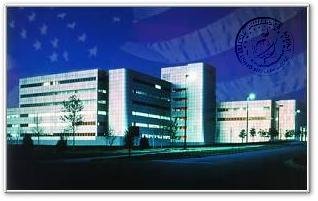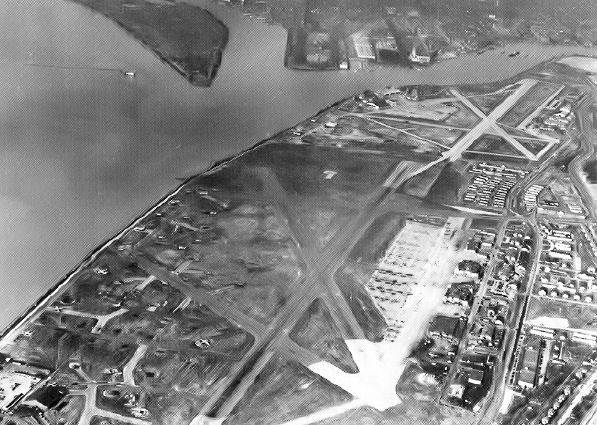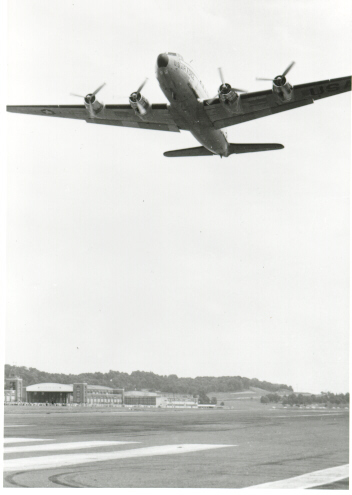Bolling Air Force Base on:
[Wikipedia]
[Google]
[Amazon]
Bolling Air Force Base or Bolling AFB was a
"Monthly media monitoring review," December 2000
. Par. 25–29.



 * Director of Military Aeronautics, 28 June 1918
* 3d Service Command, 6 March 1928
* Chief of Air Corps (Exempted Station), 1 July 1936
* General Headquarters Air Force, 15 March 1941
: Redesignated Air Force Combat Command, 20 June 1941
* Second Air Force, 13 October 1942
* Headquarters,
* Director of Military Aeronautics, 28 June 1918
* 3d Service Command, 6 March 1928
* Chief of Air Corps (Exempted Station), 1 July 1936
* General Headquarters Air Force, 15 March 1941
: Redesignated Air Force Combat Command, 20 June 1941
* Second Air Force, 13 October 1942
* Headquarters,
United States Air Force
The United States Air Force (USAF) is the Air force, air service branch of the United States Department of Defense. It is one of the six United States Armed Forces and one of the eight uniformed services of the United States. Tracing its ori ...
installation located in Washington, D.C.
Washington, D.C., formally the District of Columbia and commonly known as Washington or D.C., is the capital city and federal district of the United States. The city is on the Potomac River, across from Virginia, and shares land borders with ...
In 2010, it merged with Naval Support Facility Anacostia to form Joint Base Anacostia–Bolling. From its establishment, the base has served as a joint site for both the Army Air Corps (predecessor to today's Air Force
An air force in the broadest sense is the national military branch that primarily conducts aerial warfare. More specifically, it is the branch of a nation's armed services that is responsible for aerial warfare as distinct from an army aviati ...
) and Navy
A navy, naval force, military maritime fleet, war navy, or maritime force is the military branch, branch of a nation's armed forces principally designated for naval warfare, naval and amphibious warfare; namely, lake-borne, riverine, littoral z ...
aviation and support elements.
History
Before European colonization, the area where Bolling Air Force Base is located was inhabited by the Nacotchtank, an Algonquian people. The largest village of the Nacotchtank was located just north of the air force base, south of Anacostia Park. Another Nacotchtank village is believed to have existed on the base grounds, where two ossuaries (burial mounds) were discovered in 1936. Other Nacotchtank archaeological sites have been found at Giesboro Point on the Potomac River. The Department of Defense (DOD) has owned the Bolling grounds since 1917, when the tract of land was scouted by William C. Ocker at the direction of General Billy Mitchell. Founded on 2 October 1917 as The Flying Field at Anacostia, it was the first military airfield near theUnited States Capitol
The United States Capitol, often called the Capitol or the Capitol Building, is the Seat of government, seat of the United States Congress, the United States Congress, legislative branch of the Federal government of the United States, federal g ...
. It was renamed Anacostia Experimental Flying Field in June 1918.
Soon, the single installation evolved into two separate, adjoining bases; one Army (later Air Force) and one Navy. Bolling Field was opened 1 July 1918 and was named for Colonel Raynal C. Bolling, the first high-ranking air service officer killed in World War I
World War I or the First World War (28 July 1914 – 11 November 1918), also known as the Great War, was a World war, global conflict between two coalitions: the Allies of World War I, Allies (or Entente) and the Central Powers. Fighting to ...
. Colonel Bolling was the Assistant Chief of the Air Service, and was killed in action near Amiens, France, on 26 March 1918 while defending himself and his driver, Private Paul L. Holder, from German soldiers. Flying activities began on 4 July 1918 with mailplanes landing there, with all equipment removed from the former location at the Polo Grounds, Washington, D.C.Editors, "Mailplanes Land at Bolling Field", ''Air Service Journal'', Gardner, Moffat Co., Inc., New York, New York, 11 July 1918, Volume III, Number 2, page 53.
In the late 1940s, Bolling Field's property became Naval Air Station Anacostia and a new Air Force base, named Bolling Air Force Base, was constructed just to the south on 24 June 1948.
Bolling AFB has served as a research and testing ground for new aviation equipment and its first mission provided aerial defense of the capital. It moved to its present location, along the Potomac in the city's southwest quadrant, in the 1930s.
Over the years, Marine Corps, Coast Guard and National Guard units, as well as DOD and federal agencies also found the installation to be an ideal place from which to operate.
* In 1918, pilots from the installation were dispatched by President Woodrow Wilson to create the first permanent airmail route from Washington, D.C. to New York City
New York, often called New York City (NYC), is the most populous city in the United States, located at the southern tip of New York State on one of the world's largest natural harbors. The city comprises five boroughs, each coextensive w ...
.
* Navy seaplanes were first tested and Air Force aerial refueling techniques were developed by installation-based personnel and military commands.
* Following its successful transatlantic flight in 1927, Charles Lindbergh's ''Spirit of St. Louis'' returned to the installation. Soon after, the aircraft was used for Lindbergh's goodwill flight to Mexico and South America.
* Air Force Lt. Col. Henry "Hap" Arnold led a bomber flight from Bolling Field on a 4,000-mile journey to Alaska in 1934, to demonstrate the capabilities of long-range strategic bombing missions.
* Throughout World War II, the installation served as a training and organizational base for personnel and units going overseas. It also served as the aerial gateway to the nation's capital.
* The Air Force's first headquarters was established at the installation, as Army Air Forces Headquarters in 1941 and, with the creation of the United States Air Force, Air Force Headquarters in 1947.
* The Sacred Cow, President Harry Truman's initial official aircraft and Franklin Roosevelt's only official aircraft, retired from service on the installation in 1961. This aircraft was the predecessor to Air Force One and was used for both presidential and VIP support missions. President Truman signed the National Security Act of 1947, which created the United States Air Force, at the desk on board this aircraft.
* In 1962, fixed-wing aircraft operations at the air force and naval installations ceased, due to congested airspace around Washington National Airport on the opposite shore of the Potomac River.
Although fixed-wing aircraft operations ceased, the installations continued to serve the Military Airlift Command (MAC); the headquarters for the Air Force District of Washington; the Air Force 11th Wing; Commander, Naval Installations Command, Naval Media Center (now, Defense Media Activity-Navy) and many other military commands and federal agencies.
The Air Force District of Washington (AFDW) was created and activated at Bolling on 1 October 1985 with the mission of providing administrative support to Air Force members. On 15 July 1994, AFDW was inactivated, but was reactivated 5 January 2005 to "provide a single voice for Air Force requirements in the National Capital Region" according to the base's website.
Between 19 and 23 December 2000, representatives from the Israel
Israel, officially the State of Israel, is a country in West Asia. It Borders of Israel, shares borders with Lebanon to the north, Syria to the north-east, Jordan to the east, Egypt to the south-west, and the Mediterranean Sea to the west. Isr ...
i government and Palestinian Authority
The Palestinian Authority (PA), officially known as the Palestinian National Authority (PNA), is the Fatah-controlled government body that exercises partial civil control over the Palestinian enclaves in the Israeli occupation of the West Bank, ...
convened at Bolling to negotiate a final-status agreement to end the Israeli–Palestinian conflict
The Israeli–Palestinian conflict is an ongoing military and political conflict about Territory, land and self-determination within the territory of the former Mandatory Palestine. Key aspects of the conflict include the Israeli occupation ...
. The failure of these negotiations led to the unveiling on 23 December of the Clinton Parameters.UN Division for Palestinian Rights"Monthly media monitoring review," December 2000
. Par. 25–29.
Major commands assigned



 * Director of Military Aeronautics, 28 June 1918
* 3d Service Command, 6 March 1928
* Chief of Air Corps (Exempted Station), 1 July 1936
* General Headquarters Air Force, 15 March 1941
: Redesignated Air Force Combat Command, 20 June 1941
* Second Air Force, 13 October 1942
* Headquarters,
* Director of Military Aeronautics, 28 June 1918
* 3d Service Command, 6 March 1928
* Chief of Air Corps (Exempted Station), 1 July 1936
* General Headquarters Air Force, 15 March 1941
: Redesignated Air Force Combat Command, 20 June 1941
* Second Air Force, 13 October 1942
* Headquarters, United States Army Air Forces
The United States Army Air Forces (USAAF or AAF) was the major land-based aerial warfare service component of the United States Army and ''de facto'' aerial warfare service branch of the United States during and immediately after World War II ...
, 7 July 1943
* Continental Air Forces, 17 July 1945
: Redesignated: Strategic Air Command
Strategic Air Command (SAC) was a United States Department of Defense Specified Command and a United States Air Force (USAF) Major Command responsible for command and control of the strategic bomber and intercontinental ballistic missile compon ...
, 21 March 1946
* Bolling Field Command, 16 December 1946
* Military Air Transport Service
The Military Air Transport Service (MATS) is an inactive United States Department of Defense, Department of Defense Unified Command. Activated on 1 June 1948, MATS was a consolidation of the United States Navy's Naval Air Transport Service (NA ...
, 1 August 1952
* Bolling Field Command, 1 October 1957
: Redesignated Headquarters Command, United States Air Force, 17 March 1958
* Military Airlift Command, 1 July 1976
* Air Force District of Washington, 1 October 1985 – 5 July 1994; 7 July 2005 – present
* Headquarters, United States Air Force
The United States Air Force (USAF) is the Air force, air service branch of the United States Department of Defense. It is one of the six United States Armed Forces and one of the eight uniformed services of the United States. Tracing its ori ...
, 5 July 1994 – 7 July 2005
Mueller, Robert, ''Air Force Bases Volume I, Active Air Force Bases Within the United States of America on 17 September 1982'', Office of Air Force History, 1989
Major units assigned
* 312th Aero Sq (Service), July 1918 – 17 August 1919 * 99th Observation Sq, 18 August 1919 – 21 March 1921 * HQ Detachment, Bolling Field, 11 July 1922 – 31 March 1928 * General Headquarters, Air Force, 1 October 1933 – 28 February 1935 * 14th Air Base Group, 1 March 1935 – 31 March 1944 * 1st Staff Squadron, 1 September 1936 – 31 March 1944 * 2d Staff Squadron, 1 September 1936 – 31 March 1944 * 4th Staff Squadron, 17 May 1941 – 31 March 1944 * Air Force Combat Command, 28 March 1941 – 12 March 1942 * V Air Support Command (redesignated: Ninth Air Force), 23 July – 28 October 1942 * 5th Bombardment Wing, 10–31 July 1942 * VIII Ground Air Support Command, 28 April – 29 May 1942 * 10th Ferrying Squadron, 10 April 1942 – 1 March 1943 * Transatlantic Sector, AAF Ferrying Command : Redesignated, Transatlantic Sector,Air Transport Command
Air Transport Command (ATC) was a United States Air Force unit that was created during World War II as the strategic airlift component of the United States Army Air Forces.
It had two main missions, the first being the delivery of supplies a ...
, 21 February 1942 – 15 April 1943
* XII Air Support Command, 25 September – 19 October 1942
* Twelfth Air Force, 20–28 August 1942
* 26th Transport Group, 1 March 1943 – 21 February 1944
* Army Air Force Base Unit 1
: Redesignated Air Force Base Unit 1, 1 April 1944 – 1 April 1948
* 503d Army Air Force Base Unit, 21 February 1944
: Redesignated: 503d Air Force Base Unit, 27 September 1947 – 1 April 1948
* Continental Air Forces, 15 December 1944 – 20 October 1946
* Strategic Air Command
Strategic Air Command (SAC) was a United States Department of Defense Specified Command and a United States Air Force (USAF) Major Command responsible for command and control of the strategic bomber and intercontinental ballistic missile compon ...
, 21 March 1946 – 20 October 1946
* Bolling Field Command. 15 December 1946
: Redesignated: Headquarters Command, USAF, 17 March 1958 – 1 July 1976
* 1st Special Air Missions Squadron
: Redesignated: 1111th Special Air Mission Squadron
: Redesignated: 1299th Air Transport Squadron, 10 March 1948 – 10 July 1961
* 16th Special Air Missions Group
: Redesignated: 1100th Special Air Missions Group
: Redesignated: 2310th Air Transport Group, 10 March 1948 – 29 November 1952
* 1100th Air Base Wing, 16 March 1949 – 30 September 1977
: Redesignated: 1100th Air Base Group, 30 September 1977 – 15 December 1980
: Redesignated: 1100th Air Base Wing, 15 December 1980 – 15 July 1994
* Air Force District of Washington, 1 October 1985 – 5 July 1994; 7 July 2005–present
* 11th Wing, 15 July 1994 – 30 September 2010
See also
* List of former United States Air Force installationsReferences
External links
* {{Authority control Defunct airports in the United States Installations of the United States Air Force Military facilities in Washington, D.C. Initial United States Air Force installations Installations of Strategic Air Command Southwest (Washington, D.C.) Airports in Washington, D.C.